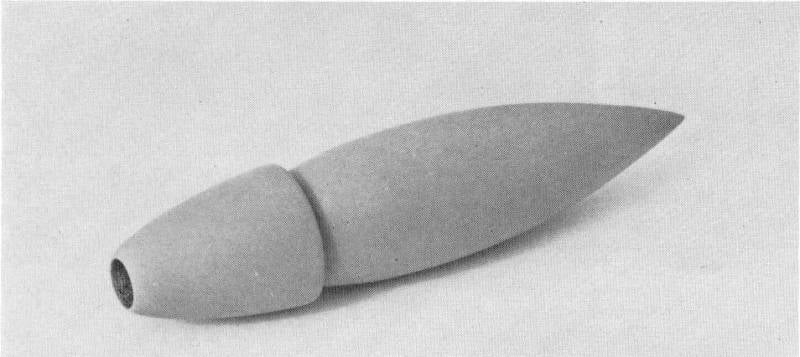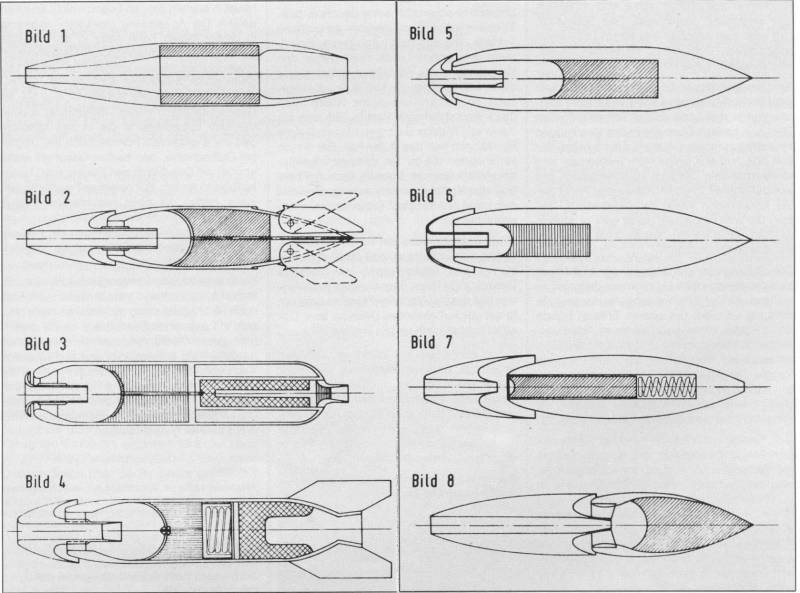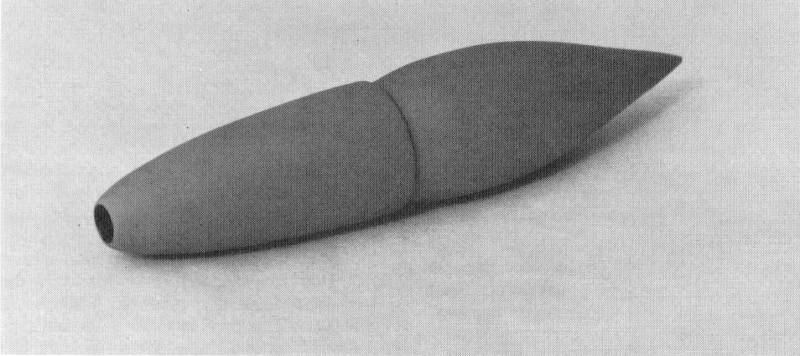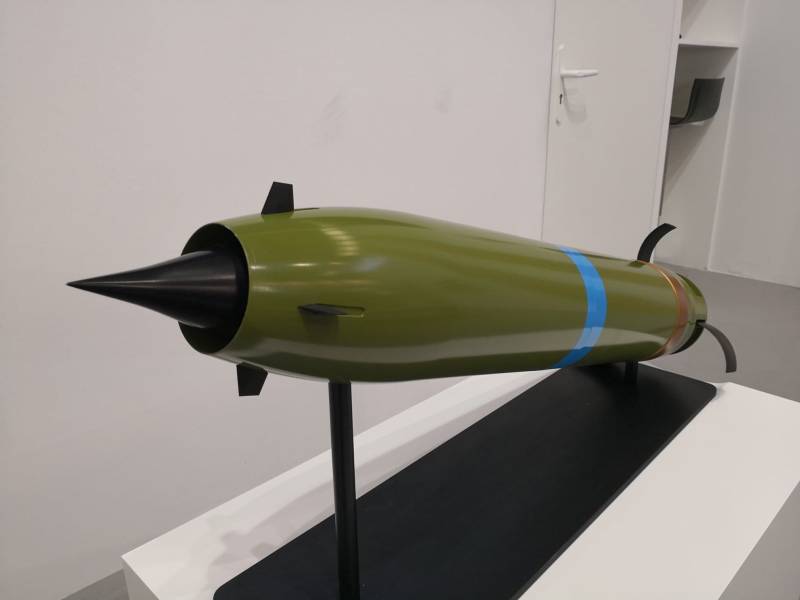Active rockets with direct-flow engines designed by A. Lippisch (Germany)
Origins and ideas
It must be recalled that the development of active rockets (APC) in Nazi Germany started back in 1934 and a few years later yielded real results. Early projects included equipping the APC with its own propellant engine. It provided additional acceleration after exiting the barrel and increased the firing range.
Already in 1936, the original version of the ARS was proposed by the designer Wolf Trommsdorff. Together with the tail section with a powder bomb, he planned to use a ramjet (ramjet engine). The idea of direct-flow ARS was supported by the military, and over the course of several years the engineer managed to create testable samples. Nevertheless, the project of V. Trommsdorff did not give real results. His ARS could not get to the front.
In 1944, the idea of ARS with ramjet engine was remembered in LFW, and immediately set to work on it. In the shortest possible time, the pros and cons of such products were determined, development paths were determined, and the first prototypes were created and tested. By the end of the year, the project documents were submitted to the command.
Shell family
The report of A. Lippisch actually dealt with the creation of a whole family of APCs with different design features. According to the LFW project, it was possible to create eight shell options with one or another plus. Eight concepts were based on several basic ideas - they were combined in different ways with different results.
The calculations showed that the ramjet for the projectile can have a different design. It could use liquid or powder fuel. Good characteristics were made possible by obtaining the simplest coal powder - a cheap and affordable fuel. Various flammable liquids were studied. The possibility of creating a combined propulsion system with liquid and solid fuel components was not ruled out.
The first version of the ARS was a simple blank with an internal channel forming a ramjet. In the center of this cavity there was a channel for pieces of coal powder. To eject such a projectile from a cannon, a special tray was required that is worn on the bottom with a nozzle.
For stabilization in flight, APC could be spun around its axis due to rifling of the barrel or using stabilizers deployed in flight. An option with ridges or shoulder blades on the head fairing was also offered.
The presence of a through channel and a pallet complicated the design and complicated the operation of the APC. To exclude it, LFW developed a new version of the architecture of the ammunition. It provided for the abandonment of the traditional bottom nozzle and the use of a different layout of the ramjet.
This version of the ARS was to consist of two parts. The main body was a body of revolution with a closed bottom without a nozzle. Inside, a cavity was provided for liquid or powder fuel, as well as means for supplying it. The head fairing received a frontal air intake, and channels or cavities were provided inside it. The fairing was put on the body with a gap.
Through the intake opening, the air had to enter the projectile and provide fuel combustion in its cavity. Gaseous products of combustion under the pressure of incoming air should fall into the cavity of the fairing, and then exit through the annular gap, which acts as a nozzle.
Such a sophisticated ramjet design had some advantages. Blowing the projectile with hot gases improved aerodynamics and could give some gain in range. The fairing could be moved along the axis of the APC, changing the width of the gap-nozzle and, accordingly, the thrust ramjet. The possibility of creating controls for this gap was not ruled out.
Inside the main body of the APC with a separate fairing, it was possible to place a powder bomber, powdered coal or a tank with liquid fuel. Several options for storage and supply of fuel to the chamber were considered.
Of some interest are options for ARS, more like missiles. It was proposed to place ramjet on liquid fuel in the head part of such a product, and a conventional solid propellant rocket engine in the tail. With the help of the latter, a start with a guide was carried out, and a liquid ramjet engine was supposed to provide acceleration in flight.
For obvious reasons, most of the internal volumes of the APC should have been occupied by ramjet and its fuel. However, there was some space inside the housing to accommodate the bursting charge and fuse. At the same time, the available volumes in different projects differed, which could affect the combat qualities of the products.
Expected Finale
Using a set of basic ideas and combining them in different ways, A. Lippisch proposed eight basic architectures of an active-rocket projectile. All of them had certain features, advantages and disadvantages. Continuing the research work, the LFW Institute could develop the proposed ideas and build on their basis real ammunition for artillery.
It is known that when working on new ARS, scientists conducted some research and testing. In particular, the optimal fuel options were determined by the results of such work. Whether the finished shells were built and whether their tests were carried out is unknown. Well-known factors impeded such work.
Perhaps the continuation of work on the ARS could lead to real results and even ensure the rearmament of the German army. However, the report on the new project appeared too late. The command was reported to him only at the very end of 1944, when the outcome of the war was obvious to Germany.
In the remaining months before the surrender, the LFW Institute was not able to complete a single promising project in the field of aviation or artillery. Many samples weapons and techniques that had previously seemed promising remained on paper. After the war and moving to the USA A.M. Lippish focused on aviation technology and did not return to the artillery theme.
Unnecessary project
The overly bold projects of A. Lippisch and V. Trommsdorff did not affect the Wehrmacht’s fighting efficiency. Even their most successful developments did not advance beyond the field tests, and in practice did not reach the implementation of ARS with ramjet. Moreover, in the future, these ideas have not been developed. Apparently, experts from the victorious countries familiarized themselves with the work of LFW - and discarded them as useless.
In the postwar period, the armament of all the leading countries appeared their own active-missile shells. These were solid fuel rocket engines. Also, simpler shells with a bottom gas generator have gained some distribution. Ramjet engines were not able to gain a foothold in the field of artillery shells.
However, the concept is not forgotten. Last year, the Norwegian industry introduced the 155-mm ARS project with solid fuel ramjet. In the near future, it should be tested, after which the issue of launching production and procurement can be decided. Whether this shell will manage to get to operation and not to repeat the fate of A. Lippish's developments is unknown.
- Ryabov Kirill
- Alternathistory.com, Nammo.com




Information